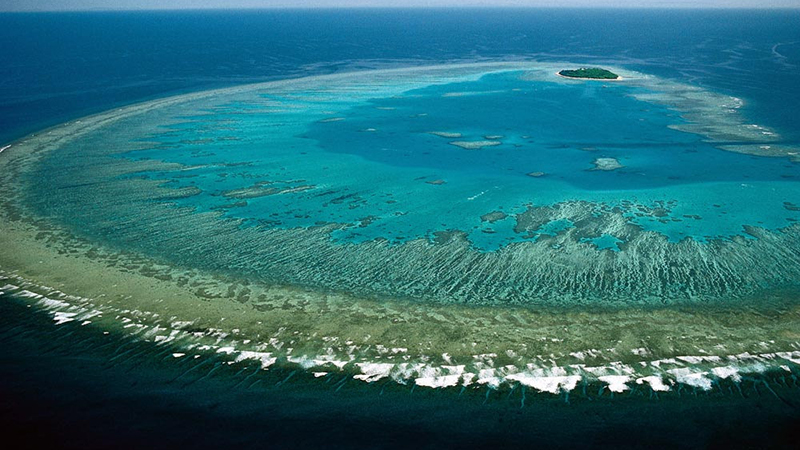One of Australia’s sought after tourist attraction, the Great Barrier Reef, more specifically its corals, are in big trouble. At the northern part of the world’s largest coral reef ecosystem, it is experiencing “the worst mass bleaching event in its history,” as told by a recent statement by the Australian Research Council.
Australia’s Great Barrier Reef is in Deep Trouble
The mass bleaching event found in the northern part of the Great Barrier Reef was documented by the National Coral Bleaching Taskforce (NCBT). The NCBT took aerial surveys, which spanned 500 coral reefs or 2,485-miles (4,000-kilometers) of the natural wonder. Their surveys showed that the majority of the reefs were experiencing extensive and severe bleaching.
Terry Hughes of NCBT stated the following about the phenomenon: “Almost without exception, every reef we flew across showed consistently high levels of bleaching, from the reef slope right up onto the top of the reef.” He also called the surveys “the saddest research trip of my life.”
The bleaching phenomenon happens when the corals are exposed to certain stress factors such as warmer-than-average temperatures found within the waters for over longer periods of time. The corals would then respond to such elements by expelling the algae that gives them their color. As of late, the corals look like they have been bleached white. This effect can be fatal for the corals because the stress factors are too intense. If this continues even longer, then the algae will be unable to recolonize them which in turn places the entire ecosystem of Australia’s Great Barrier Reef at dire risk.
Speaking of the natural wonder, it covers 134,364-square miles (or 348,000-square kilometers). This makes it larger than the Netherlands, Switzerland, and the U.K. combined, as per the Great Barrier Reef Marine Park Authority. It is also recognized as a World Heritage Area back in 1981, and the ecosystem comprises of 400 types of coral and is home to 1,500 types of fish as well as 4,000 mollusk species. Other than these, it is also home to other marine life such as sea cows (dugongs) and large green turtles.
The Great Barrier Reef also experienced bleaching events back in 2002 and in 1998. However, the current mass bleaching event is more severe than the previous two scenarios, as what experts are saying. Rebecca Albright, a marine biologist with the Carnegie Institution for Science in Washington D.C., tells Live Science that 95-percent of the northern reefs are currently showing signs of the extreme bleaching phenomenon. In comparison, only 18-percent of that portion of the reef experienced bleaching back in 2002.
